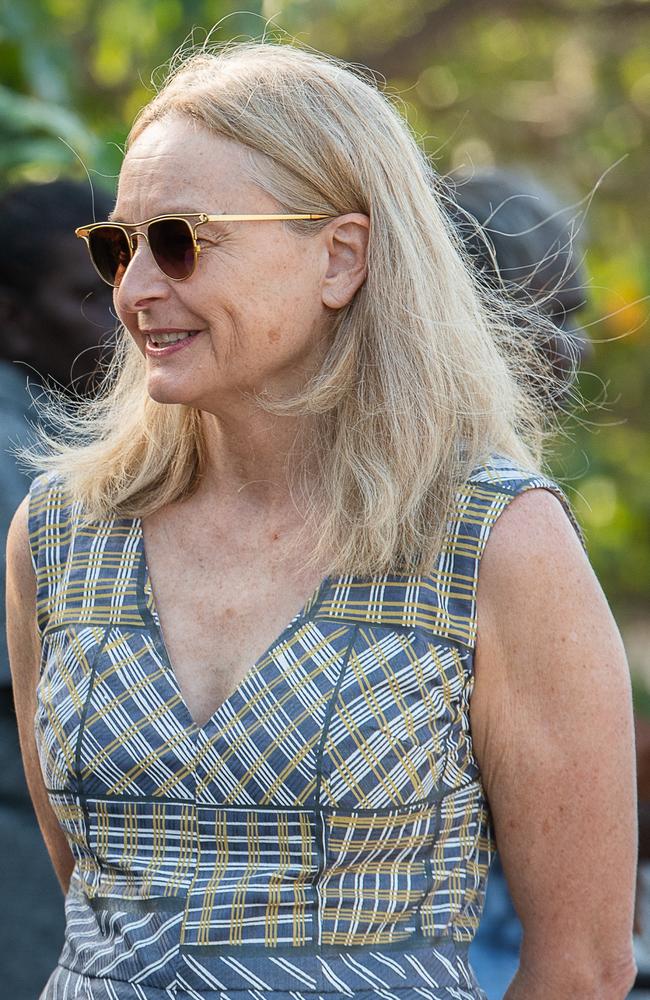Inquest hears criminal negligence case considered Kumanjai Brogus sedated four times in a day
The coroner has heard a mum-of-three was sedated four times in less than 24-hours, causing a toxic overdose. Now investigators are looking into a potential criminal negligence case.

Police & Courts
Don't miss out on the headlines from Police & Courts. Followed categories will be added to My News.
Criminal charges are being considered after a Northern Territory mother-of-three was chemically sedated by health workers four times in a single day, resulting in a toxic overdose.
The NT Coroner has heard criminal negligence or recklessness charges are being considered ahead of a coronial inquest into the death in care of a 34-year-old woman, known for cultural reasons as Kumanjai Brogus, from Hermannsburg.
Ms Brogus’s mother, Magdalene Ungwanaka told coroner Elisabeth Armitage on Wednesday that her daughter started showing signs of schizophrenia at just 13 years old.
Ms Ungwanaka said when her daughter was “sick with her head” she took medication to “settle down and go to sleep”.
Counsel assisting the coroner Chrissy McConnel said that just two days before her death in care, the 34-year-old mother had her regular depot injection, a long-term antipsychotic medication.
Ms McConnel said on November 21 a doctor noted Ms Brogus was “acting strange” and sedated her.
Hours later, Ms Brogus was taken back to the clinic and dosed again, as plans were made to transfer her 126km east to Alice Springs Hospital.
Ms McConnel said in an “unusual move” for reasons not “100 per cent clear”, Ms Brogus was sedated again in the ambulance.
While in the emergency department she was sedated for the fourth time that day before being shuffled into the mental health ward.
“It seems that at 12.15am, nursing staff checked on her and noticed she was not snoring,” Ms McConnel said.

Four minutes later she was still unresponsive, and died soon after.
Ms McConnel said the cause of death was the combined drug toxicity of the multiple chemical restraints.
Currently, medication used to sedate patients does not need to be registered or recorded under the Territory’s mental health laws.
A Consultation Report reviewing the Mental Health and Related Services Act recommended chemical restraints be clearly defined and regulated to “reflect the principle of least restriction”, with draft reforms meant to be released for public comment by late-2023.
That draft bill has not yet been released.
Detective Senior Constable Christopher Ship said the clear issue was her repeated sedation, and he was consulting with toxicity experts to determine “at what point the drugs she was given … became fatal”.
Constable Ship said while there were no signs of criminal “intent”, his investigation had to assess the “level of negligence or recklessness”.
He said Ms Brogus’s case had been referred to the Department of Public Prosecution to investigate potential criminal charges, with the Health Department still completing its root cause analysis.
“I’ve not identified anything criminal, however it is at an advice stage to say whether or not they could consider (charges); it is in the public interest to proceed with that,” Constable Ship said.

Constable Ship also highlighted potential system failures, with mental health ward patients not electronically monitored like emergency patients and limits on the staff’s ability to watch the heavily sedated patient “laying on a mattress”.
“(But staff) appear to have done what they should have done, the care was there, and what they thought was the right process,” he said.
Ms Armitage told Ms Ungwanaka it may be a long wait for answers about her daughter’s final moments.
“It may take a long time, but we haven’t forgotten your daughter … we haven’t forgotten about you,” Ms Armitage said.
“(The inquest is) for the community to make sure this doesn’t happen again, but it’s for you to know that we care about your daughter.”
Ms Armitage said the inquest was also for Ms Brogus’s three “beautiful” young children, who were now in the care of their grandmother.
“It’s important we have this story so in the future they can know what happened to mum.”




